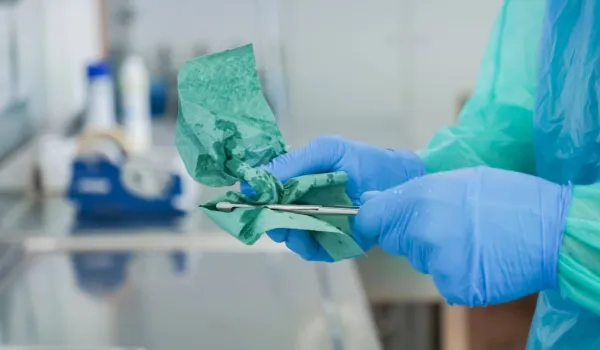
While none of Concorde's 20-plus programs focuses specifically on the eyes, there are several health care fields were caring for patients' eye issues could be commonplace. Concorde students in Nursing, Medical Assisting, and Surgical Technology all most likely will one day face caring for the eyes of patients. It's a health care awareness issue that must have attention paid.
With that in mind, March 1 commemorated the beginning of the 34th Annual National Eye Donor Month. U.S. Representative Nydia M. Velazquez, a Democrat from New York's 7th District, entered a proclamation into the Congressional Record designating it such, according to a news release from the Eye Bank Association of America (EBAA).
Health care awareness paid to the eyes
During National Eye Donor Month, EBAA and its member banks promote eye donation health care awareness, encourage individuals to register as eye, organ and tissue donors, honor donors and their families and celebrate cornea recipients. They sponsor events and activities to further acquire state and/or city proclamations, utilize social media and much more to further the public's health care awareness of the need for eye donation.
EBAA-member eye banks made possible more than 74,000 sight-restoring corneal transplants last year.
A brief history of eye donation
The first corneal transplant - and, that's what is referred to anytime eye transplant is mentioned – occurred way back in 1905. It wasn't until 1944 that R. Townley Paton, a renowned American ophthalmologist, established the world's first eye bank.
It wasn't until 1982 that President Ronald Reagan designated the first week of March, annually, as "Save Your Vision Week." President Reagan went that one better the next year by proclaiming the first "National Eye Donor Month."
Steps to becoming an eye donor
Here are some things you should know should you decide upon your death you would like to give another the gift of sight.
- The cornea is the part of the eye that is used for transplant.
- The entire eye might be used for research and education purposes, however.
- Corneal transplants are one of the most frequently performed human transplant procedures. More than 549,889 corneal transplants have been performed since 1961, restoring sight to men, women, and children ranging in age from nine days to 103 years.
- Anyone can become an eye donor. Poor eyesight or age do not prevent you from being a donor.
- It is important for individuals wanting to be donors to inform family members of their wishes.
The EBAA has helped restore sight to more than 1.5 million people since its founding. It continues to lead the eye banking community in corneal transplantation successes, technique developments, and research.
"EBAA member eye banks recovered 118,752 corneas from 66,065 donors in 2015 alone," Rep. Velazquez said. "They provided 74,173 corneas for transplant in the U.S. and around the world."
Please visit the EBAA's 2017 National Eye Donor Month web page to view Rep. Velazquez's complete proclamation and other materials for National Eye Donor Month.
Take The Next Step Towards a Brighter Future
We have a Concorde representative ready to talk about what matters most to you. Get answers about start dates, curriculum, financial aid, scholarships and more!




